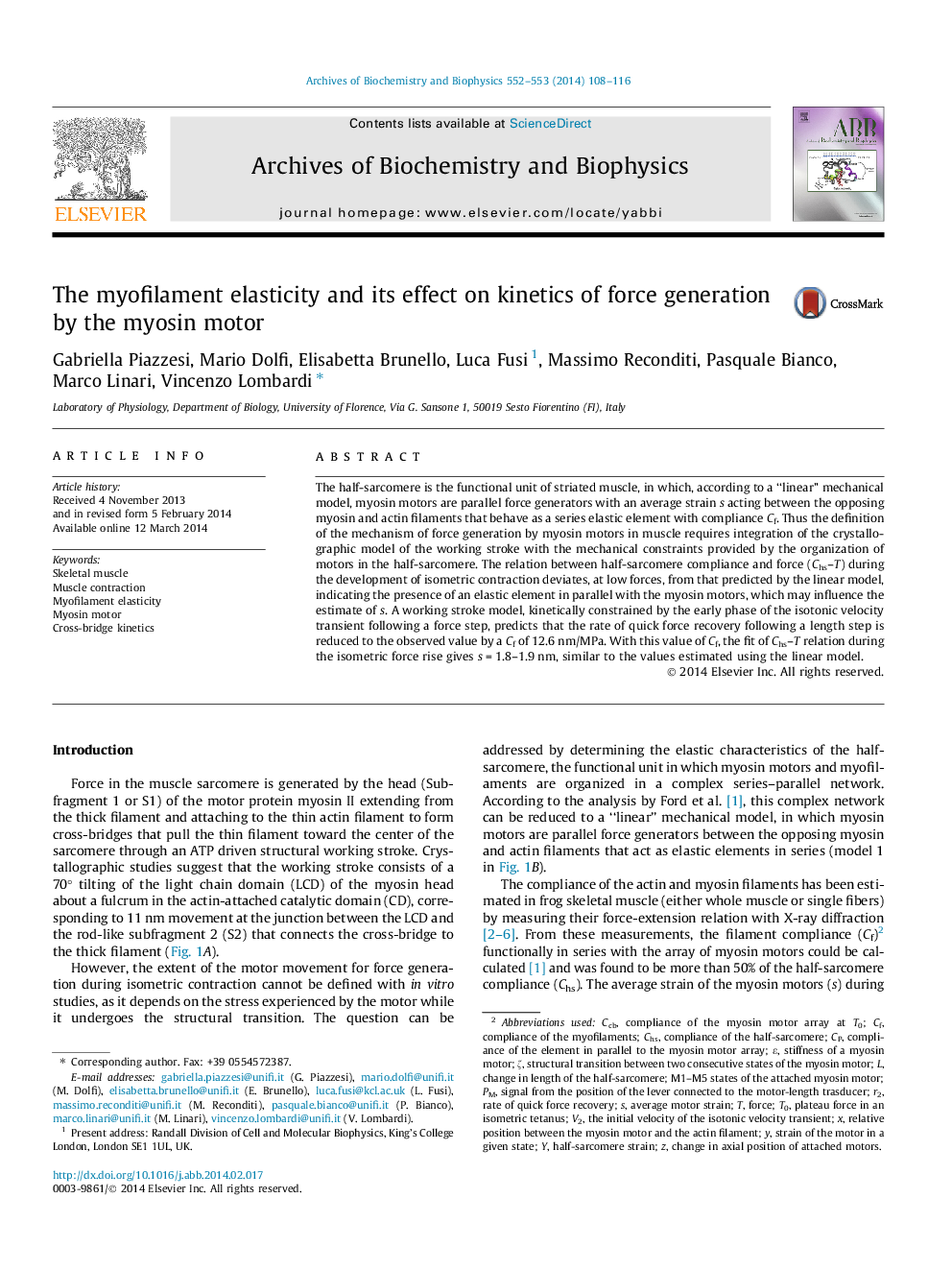| Article ID | Journal | Published Year | Pages | File Type |
|---|---|---|---|---|
| 1925189 | Archives of Biochemistry and Biophysics | 2014 | 9 Pages |
•Steady force in muscle is generated by asynchronous myosin–actin interactions.•Step perturbations in length or load synchronise the action of the myosin motors.•The filament compliance in series to motors is estimated to be 12.6 nm/MPa.•The resulting strain in force generating motors is small (<2 nm).•Myosin generates isometric force through the first step of a multistep working stroke.
The half-sarcomere is the functional unit of striated muscle, in which, according to a “linear” mechanical model, myosin motors are parallel force generators with an average strain s acting between the opposing myosin and actin filaments that behave as a series elastic element with compliance Cf. Thus the definition of the mechanism of force generation by myosin motors in muscle requires integration of the crystallographic model of the working stroke with the mechanical constraints provided by the organization of motors in the half-sarcomere. The relation between half-sarcomere compliance and force (Chs–T) during the development of isometric contraction deviates, at low forces, from that predicted by the linear model, indicating the presence of an elastic element in parallel with the myosin motors, which may influence the estimate of s. A working stroke model, kinetically constrained by the early phase of the isotonic velocity transient following a force step, predicts that the rate of quick force recovery following a length step is reduced to the observed value by a Cf of 12.6 nm/MPa. With this value of Cf, the fit of Chs–T relation during the isometric force rise gives s = 1.8–1.9 nm, similar to the values estimated using the linear model.
